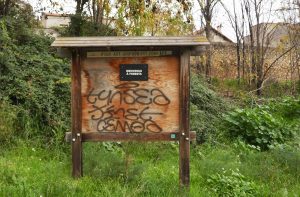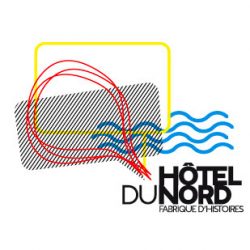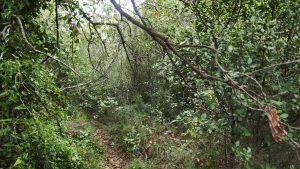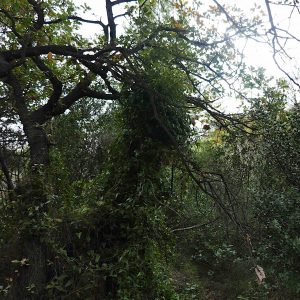Exploration stories share conversations and searches of walks under construction.
This time it starts with a picnic on the terrace of Dominique.
Each has brought a story to tell, a production to taste or a book to share around its relationship to the tree.


After the almost gastronomic pique we return to the investigation.
The memory of fractures…
First the story of the Robini faux Acacia. In the old farmhouse that Dominique and Jean come to live there is already a pack of years, they guessed two rounds surrounding what had to be two trees, pleasantly sheltering the terrace and giving airs of bastides to the place.

But we must live well and the activity of the farm evolved, especially with the storage of coal. The trees were cut to give way to the truck coming to deliver the fuel. Years later, Jean and Dominique went on a quest for a new tree to plant there, to give a little freshness to the place where we picnic.
As they hoped for a micocoulier, it is finally a Robinia who will move with them. They will learn with him to accompany the "fracture" (it is a very brittle tree), which is going to allow us to arrive at our first adage/slogan invented of the day (there will be others…): "it breaks but it grows"…
It's worth a few Nevers…
Not very far from the robinier, we find a very valiant neflier who has particularly the affection of John.

Would it be by taste for what is not very valued (like a little each of us in these walks)? Or by interest in the permanent activity that this tree shows (John is also a great worker)?
In any case he brings us our second adage: "great, it's worth the Nevers"…
The ghetto Palm tree…
Josyane has well prepared his summary of his research on the Aillante! Besides what we already knew (that it is a plant that settles in the disturbed land, which withstands very degraded conditions of soil and pollution, that one can choose to see a pest or a champion of survival), we learn that this tree was therefore imported from China (it will be seen that China is recurring in this story…) as an ornamental tree but also, but above all, in the hope of an economic exploitation via its Bombyx, a moth capable of producing silk.
When this production no longer found any economic interest it was little by little found less sympathetic…
To continue to list its qualities, and not only its flaws (our taste for Nevers…), one notices its ability to grow rapidly, the musical qualities of its wood, its abilities to inhibit the germination of other plants (which can be a defect as a quality…).
An instrument to probe Ravens in Ailante
The Ailante also has many different names, which express the difficulty of clearly classifying it on the side of good or bad…
Besides the "ghetto Palm", "false varnish of Japan", "tree of heaven" and "tree of paradise", it also has two names of use in China:
For the Chinese of the countryside it is the "tree of spring" (because its annual "Renaissance" period is late and announces with certainty the spring) when it is for Chinese cities "the stinking tree" (because it exudes a foul odor when one crummy leaves).
The Chinese also use it as a metaphor for both the father of the family (by allusion to his imposing side when he is mature) and the unturned son (alluding to the somewhat fomad growth of the stump releases).
Then the adage that comes to us could be: "Yes but no".
Between Earth and heaven…
And we finish our little round of table again with China, but also the Arabic language and the drawing, with Stephanie who shows us the ideograms that correspond to "tree" but also "root", "CIME", "forest"…
It also makes us share the beautiful book we will not go to the wood "designed by Zeynep Perinçek.
For the adage, the Chinese invite us to think about whether I was a tree…

And then we go for a stroll on ForestA…


It is to begin the return of the robinier, in another situation.
Dalila tells us that this tree, thanks to the presence of nodosity and symbiotic bacteria on its roots, has the particularity like all the Fabaceae (legumes), to be able to capture the nitrogen of the air (which most plants can not make sure the atmosphere contains 78%).
Some of this nitrogen will be used to make its proteins, and the other is to remain in the soil and become assimilated by other plants.
The Robinier, acting as a fertilizer, makes it so enjoy the others.
So it's great… yes!
But it also possibly takes the place of other plants because of its pods full of seeds… no!
"Yes but no"…
Well, we also learn that he can replace the teak to make a nice terrace but also of the gardener's sticks because his wood is unputrescible.
Potentially water marker, but yes but no tells us the company, because it is the White Poplar, not the green.
But do you know that the White Poplar is the Poplar of painters of the Italian Renaissance, the tree with which they made their altarpiece to paint on wood? The northern ones used oak.
Wink at the many Italian stories of these neighborhoods?
And here is the ash and its stories of Fresnette (idea for the Epicerie ForestA?) but also of ants that clean the tree by drinking the sweetened liquid contained in aphids from the tree's soot… Uh… you understand me??
And always these plants that would indicate the water below…
The mystery of the Savonnier. Why is it called that? We do not know but we know that once again, this tree comes from China…
Troubling this recurrence of China, when we know that the project MIF 68, which indirectly caused the project ForestA, is largely linked to Chinese investors and strategies of new Silk roads…
This time, here's a Trojan from Japan. They were fashionable in the Marseille Bastides, cut into a ball and covered with nets to allow "the hunts to the ladies", the birds being thus easier to hunt for the female… Hum hum…
Here we are at the edge of the fire. A drama and a chance… We exchange on the impacts of the fire, both traumatic for men in altering the landscape that it causes, but also Accelerator for some plants that will enjoy the light found.
It is said that it will be necessary to deepen this question of the fire, of its management also, in particular by inviting the researcher Thierry Tatony to converse with us.
White Oaks, Kermes Oaks, wireframe, Neprun, Viorne Tin, sarsaparilla, it is a whole environment that lives there, facing the Ailantes and the bushes of Atriplex.
Will one nibble on the other?
We will be attentive and to take care of this incredible relic we also propose to start a procedure of classification for the protection of the biotope, just that!!
To follow…
















